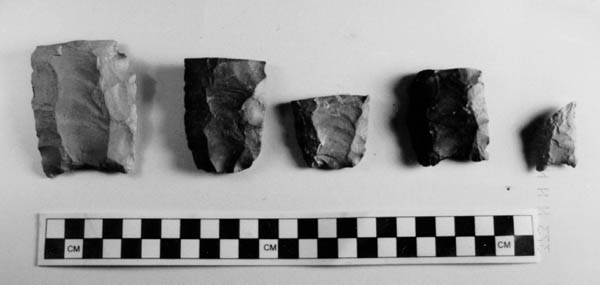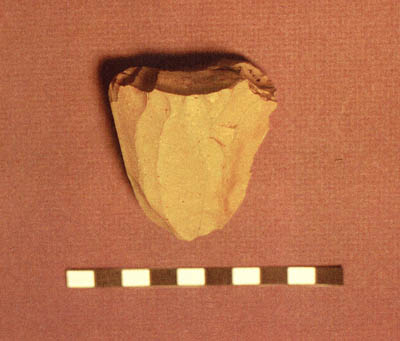Guadalupe Sanchez, University of Arizona, and John Carpenter, Universidad de las Americas-Puebla
The known archaeological record of Paleoindians in Sonora, Mexico, is currently limited to about twenty Clovis points reported from about a half-dozen locations. Nine of these points were collected in 1971 by Manuel Robles, then Director of the Museo Regional de Sonora, from a single site known as El Bajío (“the basin”). Between 1975 and 1979, a series of surface collections and test excavations were conducted at the site by Kenneth and Marian McIntyre, schoolteachers from Vancouver, Canada, and by Julio Cesar Montane of the Instituto Nacional de Antropologia e Historia (INAH) Centro-Sonora. Our new surface explorations since 1997 have determined that the site is the largest known Clovis site in western North America.
Located about 80 kilometers northeast of Hermosillo, at an elevation of about 500 meters (1,650 feet) above sea level, the El Bajío site is in a large basin bounded by mountains and hills. The basin is drained by a large arroyo and several smaller channels that cut through the buried site. Artifact-bearing deposits are visible in the channel banks over an area of about 4 square kilometers. The stratigraphic sequence spans the transition from the Late Pleistocene to the Holocene, and includes the “black mat” found at Clovis sites in the upper San Pedro Valley in southeastern Arizona.

The site includes a large quarry area of a very fine-grained basalt, which has a well-developed patina or “desert varnish” on all artifacts of Clovis age. To date, the authors have documented twenty-five Clovis points (see photo) and a variety of other flaked stone tools, including conical blade cores (see photo), large blades (see photo), bifaces and preforms, backed knives, gravers, and side and endscrapers. The large number and variety of tools, some of which exhibit use wear, indicate that El Bajío probably represents a campsite where multiple types of activities occurred in addition to lithic raw material procurement.
With the help of Elisa Villalpando of INAH Centro-Sonora, we are documenting existing artifact collections and visiting known sites in the area. This has resulted in the identification of previously unknown Paleoindian sites and the presence of a range of Paleoindian complexes, including Folsom, Plainview, and Dalton. These preliminary efforts indicate that Sonora has a rich and varied Paleoindian archaeological record that was formerly unrecognized.
